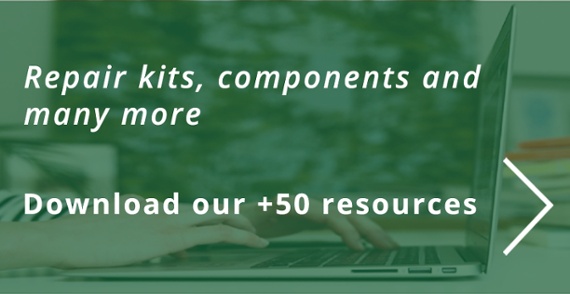
While it is true that everyone drives their car in a different way, some of these ways are not always the most appropriate.
We leave home to go to work by car and we always follow the same route. This means that driving to work has become an everyday part of our daily lives. We are so used to it that we do not even notice the gear changes, braking or starting we make. In some cases these journeys are faster, because there may be little traffic, or slower, because we are on the road at rush hour.
As drivers we must not lose our way when driving our car, as it is vitally important to pay attention to the road and to bear in mind that in some cases we can damage parts of our vehicle’s system without realising it.
One of the parts that suffers the most due to our driving is the clutch. That is why from Frenkit, we explain to you which are the most common habits that can damage the clutch of our vehicle and that unconsciously, we always do. And, we will answer the question of: why is my clutch not working?
How our car’s clutch works
In previous posts we have already discussed what the clutch consists of: The clutch allows the correct transmission of power from the engine to the gearbox, which finally passes to the wheels of the car.
Before starting the vehicle, the following should be taken into account: with the gear lever in neutral, turn the ignition key. At this point, the engine starts and the vehicle remains running without starting.
But, why does this happen? Well, this happens because the engine power is not transmitted to the transmission system because we have not engaged any gear that transmits that power, i.e., even if we accelerate, the vehicle does not move. Something similar happens in the disengagement position, when the gear is engaged and the clutch pedal is depressed. In this case, it is the clutch that is not transmitting power to the transmission system.
Now it is time to engage the first gear of the gearbox. At this point, the clutch connects the gearbox to the engine. This is when we call the clutch engagement process, which consists of releasing the clutch pedal and complete engagement takes place. But what does this mean? It means that both the gearbox and the engine of the car are connected, which turns the wheels according to the gear.
7 habits that damage the clutch of your car
Clutch wear is often caused not only by continuous use, but also by misuse of the clutch pedal when driving.
That is why we wanted to bring you this post, in which we discuss why the clutch is damaged and what the bad driving habits clutch are:
Driving with your foot on the clutch pedal
It is important to remember that we should only keep the pedal depressed when changing gears, braking or starting. Many drivers are in the habit of leaving their foot on the clutch pedal, causing continuous wear.
Although we may think that we do not exert enough pressure when our foot is on the pedal, we are wrong. By keeping the foot on the pedal, we exert pressure which is transmitted to the clutch, thus causing a separation between the flywheel and the friction disc and causing the friction disc to gradually wear out.
We therefore urge you to place your foot on the side of the clutch pedal, in the space known as the footrest. This avoids having to press the clutch pedal unconsciously.
Depressing the clutch pedal while in neutral
We may think that having the clutch pedal depressed with the gear engaged does not wear out the mechanism of our car, as the disc is free, it does not rub against any other part. However, although this is true, the diaphragm springs of the pressure plate gradually lose tension. This is because, by stretching the clutch control cable, we end up wearing out the thrust bearing. So do not make this mistake. When you are going to be stationary with your car for a few seconds, put it in neutral and release the clutch pedal.
Not depressing the clutch all the way when changing gears
Depressing the clutch when it should not be used is just as damaging to our car’s system as not using it correctly when it should be used.
If, as drivers, we do not press the clutch pedal ‘all the way down’ we are not disengaging the system completely, thus causing friction between the clutch elements and unnecessary wear.

Not being careful when washing the car
Can driving through water damage your car? It sounds unbelievable, but it is absolutely true. When we wash our car, we tend to spray pressurised water on the system underneath it. While it is true that most of the car’s exterior components can get wet, it is better to avoid sparing water on the systems inside the car, such as the clutch system.
Using the clutch when on an incline
If we are on a slope and we are using the clutch, it will eventually wear out and therefore affect the life of our vehicle. It is best to use the handbrake when on a gradient. Although this action tends to be used more by novice drivers, many expert drivers do this habit in order to get the hang of the clutch without the car rolling backwards. Thanks to it, we will be safer and will not burn the clutch system as much.
Over-accelerating when changing gear
Many drivers do not fully release the accelerator pedal when depressing the clutch when shifting gears; or they depress the accelerator pedal too hard while slowly releasing the pedal.
If the friction disc slips excessively, the friction disc heats up and wears unnecessarily. It is a component that rotates at the same time as the transmission. So if the wheels turn slowly (or hardly at all), but the engine turns very fast, the difference in speed is being absorbed by the clutch disc.
This error tends to be very common in nocive drivers and older people. In the former, as they are inexperienced and nervous at the wheel, they are not used to playing with the clutch pedal and the accelerator. As for the latter, as they lose strength in their leds and their hearing is worse, they do not realise that the engine is revving.
Overloading the vehicle
We must not overload the vehicle beyond its maximum permissible load, as the heavier the load on the car, the more the clutch system, tyres or suspension can be seriously damaged.
All the components of our vehicle have a working range set by the manufacturer. If this maximum is exceeded, the components may be damaged, which means that they will not respond adequately to our driving.
At Frenkit we are specialist in brake spare parts. That is why we believe that the clutch system is a mechanism that we should always take care of and have ready in our vehicle.
Visit our online brake shop where we offer you all our repair kits and components. What are you waiting for?


